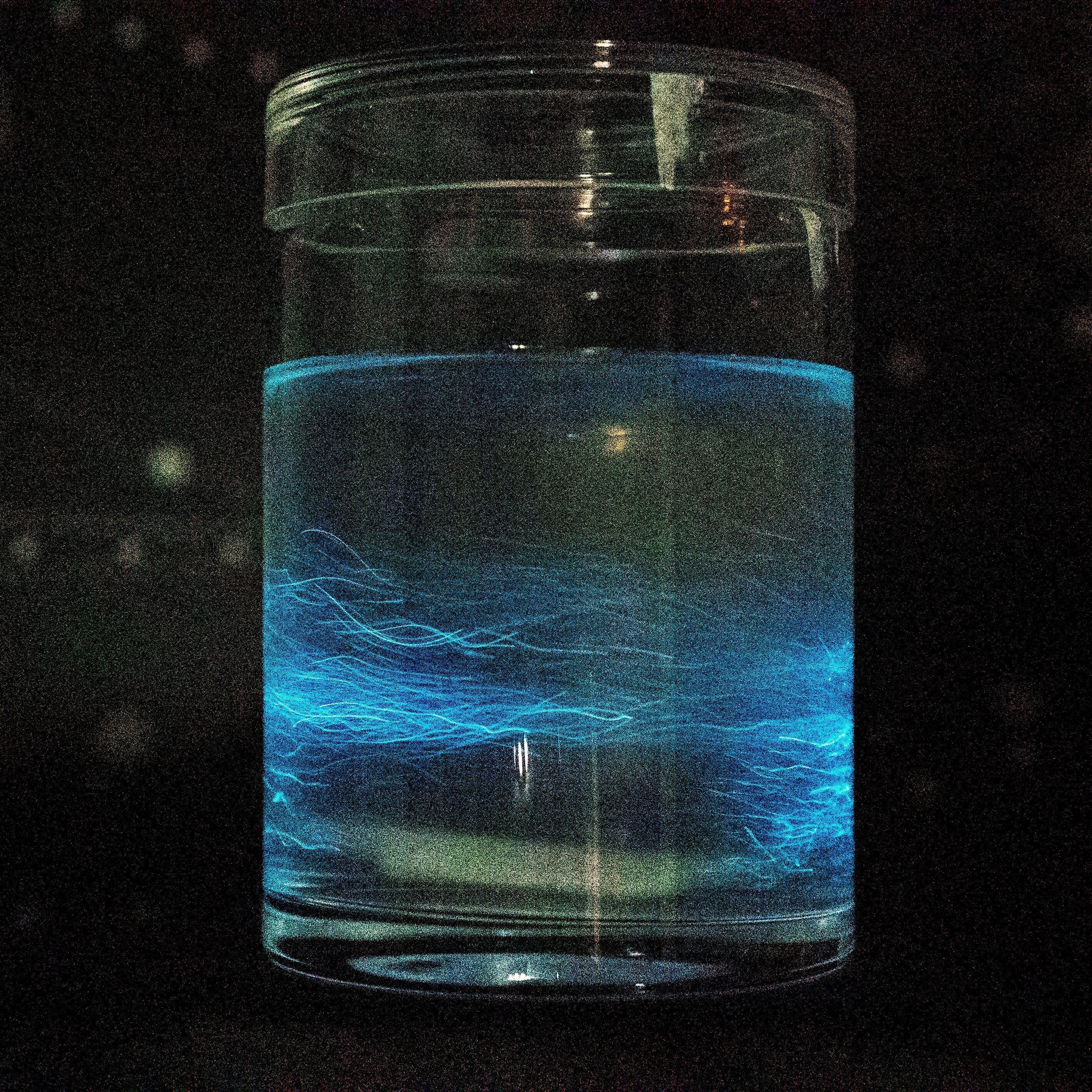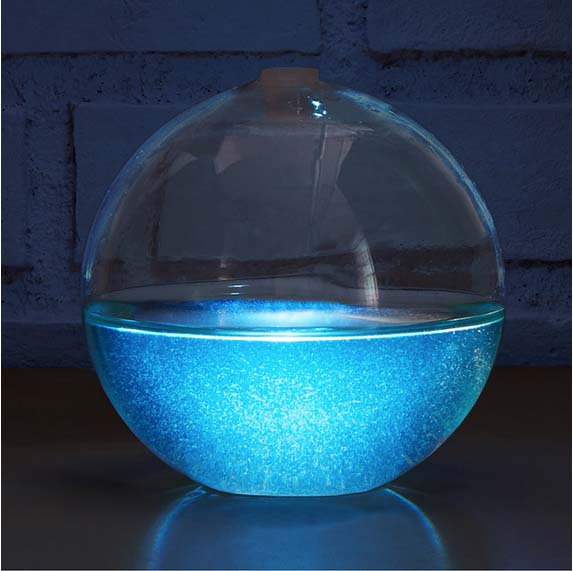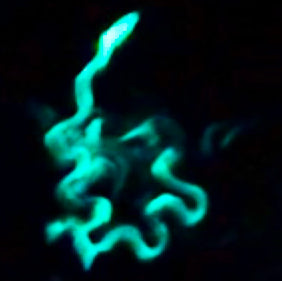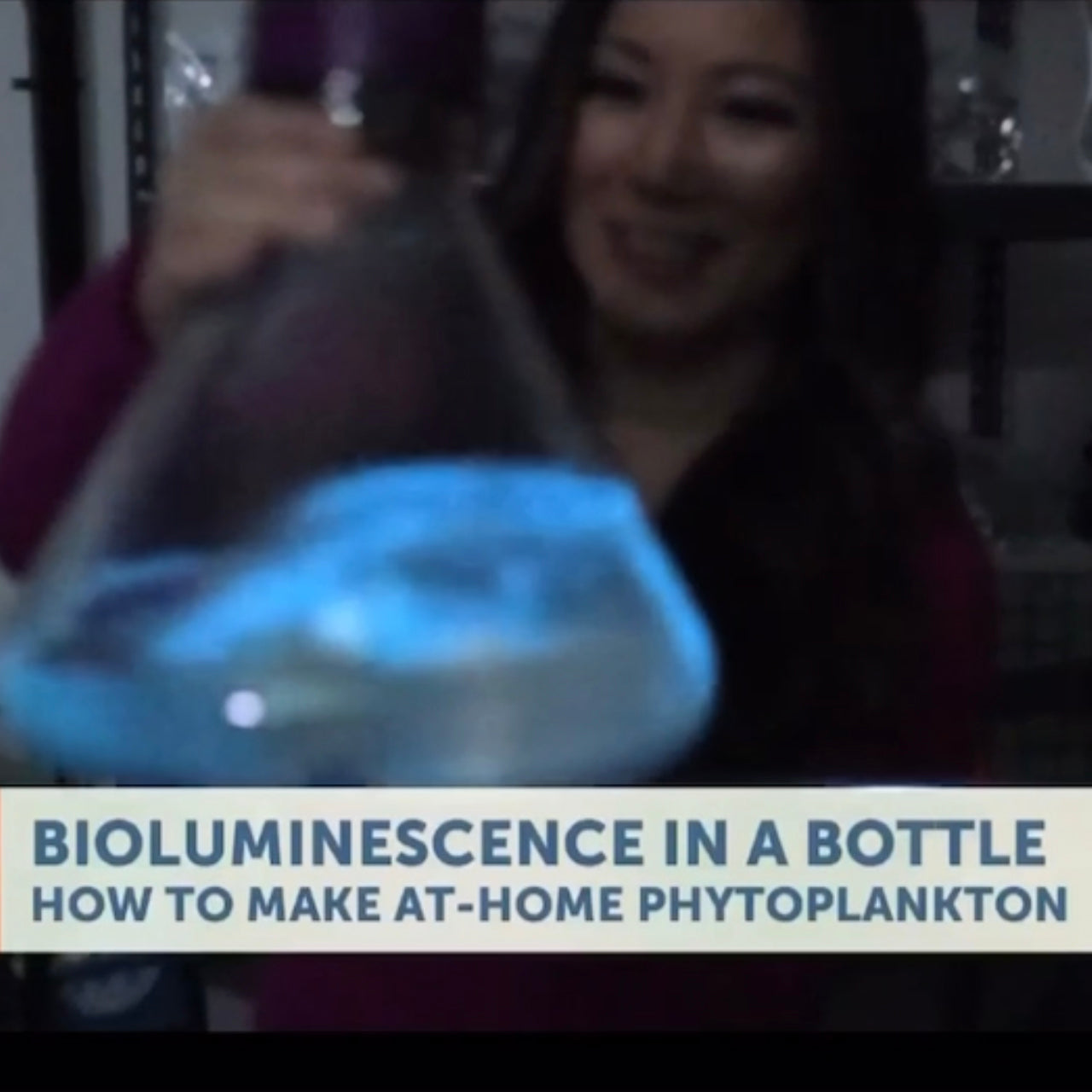Adding PyroDinos to a Saltwater Aquarium

So you want to add bioluminescent PyroDinos (phytoplankton) to your marine aquarium.
Go for it. It's easy to do and beautiful to behold.
- Get some PyroDinos (HERE).
- Wait for nighttime.
- Turn off the lights, pour some into the tank, and watch the show unfold.
You should be able to see a starry night effect for several nights or weeks, depending on your aquarium.

SALTWATER - MARINE AQUARIUMS - ONLY
PyroDinos are the dinoflagellate species Pyrocystis fusiformis. Some saltwater tank caretakers will cringe when they see the word 'dinoflagellate'. They will warn that dinoflagellates can be a dreadful scourge to marine tanks. This notion is partly true. Some non-photosynthetic dinoflagellate species can be a plague to saltwater tanks. PyroDinos are different because they are true phytoplankton.

Phytoplankton (also called microalgae) are tiny photosynthetic organisms (similar to single-celled plants) that make up the bottom of the food chain. Phytoplankton use sunlight and carbon dioxide to produce simple sugars called glucose. Like land plants, phytoplankton convert light into sugar through photosynthesis. They make their own food and are a nutritious food source for many marine organisms (directly or indirectly). In addition, marine filter-feeding invertebrates up the food chain depend on phytoplankton as a primary or secondary food source.

What are the cons of adding PyroDinos? First, these PyroDinos could be removed by mechanical filtration and protein skimmers (not to mention predation). And adding phytoplankton in a marine aquarium could add phosphates, nitrates, and silicates that could cause water imbalance. And some coral and invertebrate species in a marine aquarium do not directly feed on phytoplankton.
You may also grow PyroDinos under standard lighting in a 2-liter bottle or refugium tank. You can then dose your marine tank at night with the PyroDino culture. There are several ways to add (or dose) PyroDinos from a culture bottle or refugium; manually or by using a reef dosing pump. For more information on growing your own PyroDinos:
https://pyrofarms.com/blogs/pyrofarms-blue-light-special/grow-your-own-pyrodinos
Here is video from one of our customers who has a reef tank:




Comments
Stephanie Wescott —
So if I wanted to have the pyrodinos in my fish tank. No filter or anything can I put a fountain in there to make the move at night?